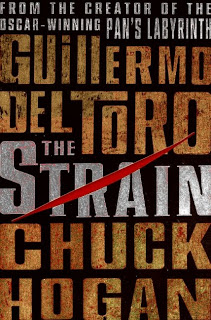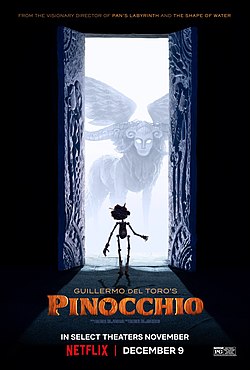
Leonor Magdalena Varela Palma is a Chilean born actress. She played the title role in the 1999 television film Cleopatra, and vampire princess Nyssa Damaskinos in the 2002 Marvel Comics film Blade II.

Blade is a 1998 American superhero film directed by Stephen Norrington and written by David S. Goyer. Based on the Marvel Comics superhero of the same name, it is the first installment of the Blade franchise. The film stars Wesley Snipes as the titular character with Stephen Dorff, Kris Kristofferson and N'Bushe Wright in supporting roles. Blade is a Dhampir, a human with vampire strengths but not their weaknesses, who fights against vampires.

Blade: Trinity is a 2004 American superhero film written and directed by David S. Goyer, who also wrote the screenplays to Blade and Blade II. It stars Wesley Snipes as Blade, based on the Marvel Comics character of the same name, who also produced with Goyer, Peter Frankfurt and Lynn Harris, with a supporting cast of Ryan Reynolds, Jessica Biel, Kris Kristofferson, Dominic Purcell, Parker Posey and Triple H in his acting debut.

David Samuel Goyer is an American filmmaker, novelist and comic book writer. He is best known for writing the screenplays for several superhero films, including Nick Fury: Agent of S.H.I.E.L.D. (1998), the Blade trilogy (1998–2004), Christopher Nolan's Dark Knight trilogy (2005–2012), Man of Steel (2013) and Batman v Superman: Dawn of Justice (2016). He has also directed four films: Zig Zag (2002), Blade: Trinity (2004), The Invisible (2007) and The Unborn (2009). He is the creator of the science fiction television series Foundation which is loosely based upon the Foundation series written by Isaac Asimov.
Vampires are fictional characters appearing in American comic books published by Marvel Comics. The concept of the Vampire has been depicted by Marvel to varying degrees of significance. Bearing a strong resemblance to their literary counterparts, Marvel vampires are mostly an undead subspecies of humans that sustain their immortality and paranormal power by drinking the blood of living humans. Unlike most other depictions of the creature, these vampires have their roots in both the supernatural and biology. Victims are converted to vampirism via enzymes carried in the vampire's saliva, which cause reanimation once introduced into the bloodstream during feedings.

Guillermo del Toro Gómez is a Mexican filmmaker. A recipient of three Academy Awards and three BAFTA Awards, his work has been characterized by a strong connection to fairy tales and horror, with an effort to infuse visual or poetic beauty in the grotesque. He has had a lifelong fascination with monsters, which he considers symbols of great power. He is also known for his use of insectile and religious imagery, his themes of Catholicism, anti-fascism, and celebrating imperfection, underworld motifs, practical special effects, and dominant amber lighting.

Luke Damon Goss is an English actor, and drummer of the 1980s band Bros. He has appeared in numerous films including Blade II (2002) as Jared Nomak, One Night with the King (2006) as King Xerxes, Hellboy II: The Golden Army (2008) as Prince Nuada, Tekken (2009) as Steve Fox, Interview with a Hitman (2012) as Viktor, and Traffik (2018) as Red.

Cronos is a 1992 Mexican independent horror drama film written and directed by Guillermo del Toro and starring Federico Luppi and Ron Perlman. Cronos is del Toro's first feature film, and the first of several films on which he worked with Luppi and Perlman. The film was selected as the Mexican entry for the Best Foreign Language Film at the 66th Academy Awards, but was not accepted as a nominee. A stand-alone sequel, We Are What We Are, was released in 2010, with the only connection being Daniel Giménez Cacho reprising his role as Tito the Coroner.

Abraham Whistler is a fictional character appearing in media based on Marvel Comics. A vampire hunter and the mentor of Blade, created by David S. Goyer for the 1998 film Blade, named after Abraham van Helsing, the nemesis of Count Dracula from Bram Stoker's Dracula (1897), Whistler first appeared in Spider-Man: The Animated Series in 1995, adapted from Goyer's then-unfilmed screenplay, where he was originally voiced by Malcolm McDowell and later by Oliver Muirhead. Whistler then made his live-action debut in Blade, portrayed by Kris Kristofferson, who reprised the role in Blade II (2002) and Blade: Trinity (2004), with comparisons made between Whistler and Jamal Afari, who appeared in the original Marvel Comics as Blade's mentor. A young Whistler returned in Blade: The Series in 2006, portrayed by Adrian Glynn McMorran, and in Rick and Morty in 2023, voiced again by Kristofferson.

Blade is a superhero film and television franchise based on the Marvel Comics character of the same name, starring Wesley Snipes as Blade in the original trilogy, and Sticky Fingaz in the television series. The original trilogy was directed by Stephen Norrington, Guillermo del Toro and David S. Goyer, the latter of whom also wrote the films and served as a co-writer for the first and last two episodes of the television series. The original films and television series were distributed by New Line Cinema from 1998 to 2006.

Blade: The Series is an American television series created by David S. Goyer for Spike based on the Marvel Comics character Blade. Sharing continuity with New Line Cinema's Blade film series, it was produced by New Line Television in association with Marvel Entertainment. The series takes place after the events of the film Blade: Trinity (2004) and stars Sticky Fingaz as Eric Brooks / Blade, with Jill Wagner, Neil Jackson, Jessica Gower, and Nelson Lee also starring. The two-hour pilot was directed by Peter O'Fallon from a script by Goyer and Geoff Johns.

Hellboy II: The Golden Army is a 2008 American superhero film based on the Dark Horse Comics character of the same name, created by Mike Mignola. Produced by Lawrence Gordon and Lloyd Levin in association with Dark Horse Entertainment, and distributed by Universal Pictures, it is a sequel to Hellboy (2004) and is the second live-action film in the franchise. Directed and written by Guillermo del Toro from a story he co-wrote with Mignola, the film stars Ron Perlman as Hellboy, alongside Selma Blair, Doug Jones, Jeffrey Tambor, and John Hurt. In the film, Hellboy and the Bureau of Paranormal Research and Defense must battle a mythical prince who plans to reclaim the world for his magical kindred.
Horror films in Mexico form part of cinema of the country.
Matthew Steven Schulze is an American actor and musician. He is known for his role as Vince in The Fast and the Furious and Fast Five.

The Strain is a 2009 vampire horror novel by Guillermo del Toro and Chuck Hogan. It is the first installment in The Strain Trilogy, and was followed by The Fall (2010) and The Night Eternal (2011).

Blade II is a 2002 action beat 'em up video game developed by Mucky Foot Productions and published by Activision for the PlayStation 2 and Xbox. Originally scheduled for North American release on the same day as the theatrical release of the 2002 film of the same name, it was ultimately released on September 3, the same day the film was released on DVD.

The Shape of Water is a 2017 Mexican-American romantic dark fantasy film directed and co-produced by Guillermo del Toro and written by del Toro and Vanessa Taylor. It stars Sally Hawkins, Michael Shannon, Richard Jenkins, Doug Jones, Michael Stuhlbarg, and Octavia Spencer. Set in 1962 Baltimore, Maryland, the film follows a mute custodian at a high-security government laboratory who falls in love with a captured humanoid amphibian creature, and decides to help him escape from death at the hands of an evil colonel. Filming took place on location in Ontario, Canada, from August to November 2016.

The following is a list of unproduced Guillermo del Toro projects in roughly chronological order. During his decades-long career, Mexican filmmaker and author Guillermo del Toro has worked on a number of projects that never progressed beyond the pre-production stage. Some of these projects fell into development hell and are presumably canceled, while some were taken over and completed by other filmmakers.

Guillermo del Toro's Pinocchio is a 2022 stop-motion animated musical dark fantasy film directed by Guillermo del Toro and Mark Gustafson, with a screenplay by del Toro and Patrick McHale. Matthew Robbins and del Toro's modified Pinocchio story, drawing from the 1883 Italian novel The Adventures of Pinocchio by Carlo Collodi, was strongly influenced by Gris Grimly's illustrations for a 2002 edition of the book. The film reimagines the adventures of Pinocchio, a wooden puppet who comes to life as the son of his carver Geppetto. Set in Fascist Italy during the interwar period, the film stars the voice of Gregory Mann as Pinocchio and David Bradley as Geppetto, alongside Ewan McGregor, Burn Gorman, Ron Perlman, John Turturro, Finn Wolfhard, Cate Blanchett, Tim Blake Nelson, Christoph Waltz, and Tilda Swinton. Pinocchio was the final film credited to Gustafson before his death in 2024.

Blade, born Eric Brooks and also known as The Daywalker, is a fictional character primarily portrayed by Wesley Snipes and Sticky Fingaz in the New Line Cinema Blade franchise, based on the Marvel Comics character of the same name created by writer Marv Wolfman and illustrator Gene Colan. In his original 1970s comics, Blade had been depicted as a human immune to vampire bites, and had worn a red/green suit, bright green goggles, and an afro-style haircut. Wolfman and Colan updated his look in 1991 to include a dark leather jacket and short hair. The comics had also given Blade vaguely supernatural abilities, while still keeping him human. The character was completely streamlined for the film franchise, where Blade is depicted as a sunglasses and leather-wearing dhampir. In both comics and film, the character gained enhanced abilities after his mother was bitten by a vampire while giving birth to him. A variation of the film's storyline was integrated into Spider-Man: The Animated Series by John Semper in 1995 ahead of the first Blade (1998) film being made, adapted from an early script for the film by David S. Goyer, and Blade's redesigned costume and powers were integrated into comics as well in 1999. Following two further sequel films starring Snipes: Blade II (2002) and Blade: Trinity (2004), Fingaz was cast to replace him in Blade: The Series in 2006.
















